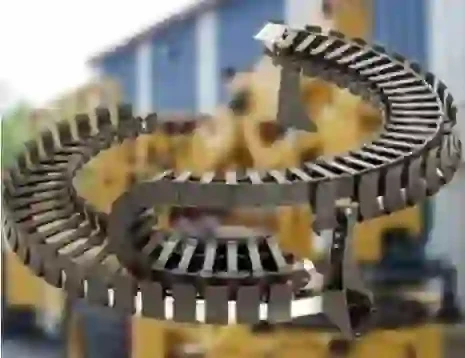Understanding the Benefits and Applications of Synchronous Belts in Modern Machinery
Understanding Synchro Belts A Comprehensive Overview
In the realm of mechanical engineering and design, synchro belts have emerged as an essential component in the efficient transfer of power and motion. A synchro belt, commonly referred to as a synchronous belt or timing belt, is a toothed belt that maintains precise timing between rotating components in machinery. This article delves into the fundamental characteristics, applications, benefits, and maintenance of synchro belts.
Characteristics of Synchro Belts
Synchro belts are typically made from a combination of high-strength materials, such as polyurethane or rubber, reinforced with fabric or steel for added strength and durability. The most distinguishing feature of these belts is the teeth that are molded onto their inner surface. These teeth engage with corresponding grooves on the pulleys, ensuring positive engagement and eliminating the risk of slippage. As a result, synchro belts offer superior performance in terms of speed control and positioning accuracy.
One of the critical specifications for any synchro belt is its pitch, which refers to the distance between the teeth. For common applications, pitch sizes can vary widely, including 5mm, 8mm, and 14mm. The choice of pitch size is essential and depends on the specific requirements of the application, such as load capacity and operational speed.
Applications of Synchro Belts
The versatility of synchro belts is evident in their broad range of applications across various industries. These belts are predominantly used in automotive applications, especially in the timing systems of engines where precise timing is crucial for optimal performance. In addition to automotive uses, synchro belts are also widely employed in manufacturing and industrial machines, packaging machinery, robotics, and conveyor systems.
In the world of robotics, for example, synchro belts are favored for their ability to provide precise control over movement, allowing for accurate positioning of components
. In automated assembly lines, they contribute to efficient operations by synchronizing the movement of multiple parts simultaneously, thereby enhancing productivity.synchro belt

Benefits of Synchro Belts
One of the primary advantages of synchro belts is their high efficiency in power transmission. Unlike standard belts that can slip and lead to energy losses, synchro belts maintain a constant connection between the drive and driven pulley. This consistent engagement enhances overall system efficiency and reliability.
Moreover, synchro belts operate quietly compared to traditional V-belts, making them suitable for applications where noise reduction is critical. The smooth operation also translates to reduced wear and tear on components, extending the lifespan of both the belt and the machinery it drives.
Another significant benefit is their resistance to stretching and wear. While conventional belts may require frequent adjustments or replacements, synchro belts tend to maintain their dimensions longer, reducing maintenance costs and downtime.
Maintenance of Synchro Belts
To ensure optimal performance and longevity, regular maintenance of synchro belts is essential. Although these belts are low-maintenance, users should regularly inspect for signs of wear, misalignment, or damage. Proper tensioning is also critical; too much tension can lead to premature wear, while too little can result in slippage and reduced performance.
In conclusion, synchro belts are vital components in modern mechanical systems, providing reliable and precise motion control. Their unique characteristics, combined with a wide range of applications and benefits, make them indispensable in various industries. By understanding their fundamental principles and maintaining them properly, engineers and technicians can leverage synchro belts to enhance the performance and efficiency of their systems. Whether in a complex manufacturing setup or a simple automotive engine, the synchro belt's role in precision and reliability is undeniable, marking it as a cornerstone of mechanical engineering innovation.








